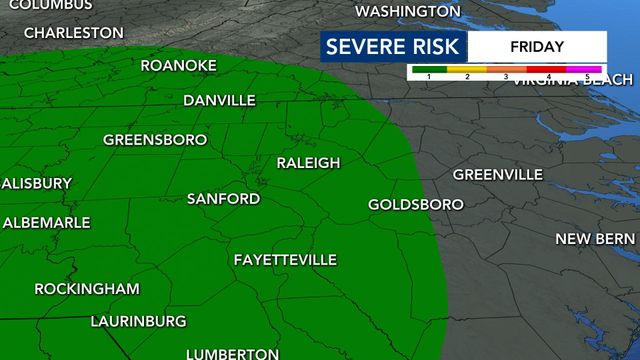What Are ‘Red Flag’ Gun Laws, and How Do They Work?
With one mass shooting after another in recent years, political leaders have debated how to take preventive action without trampling on constitutional rights. Some states have tried, and more have debated, enacting measures called red flag laws, which are intended to restrict potentially dangerous people rather than dangerous weapons. That approach is seen as more likely to attract bipartisan support than many other gun control proposals. Here is what you need to know about those laws.
What are red flag laws?
They are state laws that authorize courts to issue a special type of protection order, allowing the police to temporarily confiscate firearms from people who are deemed by a judge to be a danger to themselves or to others.
Often, the request for the order will come from relatives or friends concerned about a loved one who owns one or more guns and has expressed suicidal thoughts or discussed shooting people. The authorities may also request an order.
How long the guns are taken away under these “extreme risk protection orders” depends on the circumstances, and can usually be extended only after another court hearing. The orders also bar the person they cover from purchasing guns.
How many states have one now?
At least 17 states now have approved some version of a red flag law, including Florida, New York, Connecticut, Illinois, Indiana and California. Before the 2018 mass shooting at Marjory Stoneman Douglas High School in Parkland, Florida, only five states had such laws.
California’s law is among the most elaborate. It was the first to permit family members to petition the courts directly for orders to confiscate weapons from relatives. Earlier laws in Connecticut and other states generally required the public to make reports to prosecutors or the police, who would decide whether to petition the courts. California’s law was enacted after a gunman killed six people and wounded 14 others in 2014 near the campus of the University of California, Santa Barbara.
New York’s is one of the most recent to be adopted. It allows teachers as well as family members and others to petition the courts for protective orders. (New York already had a law denying gun permits to people reported by mental health professionals to be a danger to themselves or others.)
Nevada and Hawaii have also approved red flag laws this year.
Where was this approach first tried?
Connecticut was the first state to pass a red flag statute, in 1999, after an accountant who worked at the headquarters of the state lottery fatally stabbed and shot four of his supervisors and then himself. The gunman, Matthew Beck, had shown signs of emotional instability and was being treated for stress-related problems before the shooting.
At first, the law went almost unused, with only a few cases a year. But state statistics show that the pace began to quicken after high-profile shootings began to occur more frequently in other states, starting in 2007 with the deaths of 33 people on the campus of Virginia Tech.
What about federal law?
National red flag bills have repeatedly stalled in Congress. But in recent months, key Republicans have signaled support for legislation that would encourage more states to pass red flag laws by offering them grants. This week, Sen. Lindsey Graham, R-S.C., chairman of the Judiciary Committee, said he planned to propose a bill along those lines. Because such a bill would not restrict gun access at the federal level, leaving gun policy up to individual states instead, it was seen as more likely than other gun control measures to attract Republican votes.
Who is against red flag laws, and why?
Many conservatives oppose all restrictions on access to firearms, arguing that they infringe on the Second Amendment. The National Rifle Association has offered support for the concept of keeping firearms out of the hands of dangerous people, but it has opposed state red flag laws in practice, arguing that they go too far by allowing courts to confiscate guns from people who have not committed a crime. The organization has also complained that red flag laws in states like Oregon deny the targets of the protective orders due process of law, by allowing orders to be issued without the target having a chance to be heard. The NRA has not supported any state red flag law that has yet been enacted.
Do red flag laws work?
Law enforcement officials say it’s difficult to quantify how effective red flag laws are, because no one can say for certain how many killings were prevented. Officials in several states say they see increases in reports of potentially dangerous people and requests for confiscations after mass shootings in other states make headlines.
Connecticut’s experience shows that the laws are not 100% effective: The gunman who killed 26 people at Sandy Hook Elementary School in December 2012 had access to guns even though people who knew him said he had shown troubling signs before the attack.
Red flag measures have been used in situations far different from the mass shooting scenarios they were originally intended to prevent. Most often, guns have been removed from people who were seen as threats to themselves or to their families, or who were suffering from judgment-impairing illnesses like dementia or alcoholism, rather than posing a threat to large groups or public gatherings.
Several studies suggest that the laws have a substantial effect on suicides, the most common way that guns kill Americans. Research in Connecticut and Indiana found that for every 10 to 20 confiscations under the laws, there was one fewer death than would otherwise have been expected.
The researchers then tracked the people who were subject to the confiscation orders, and found that they were more than 30 times as likely as the average person to commit suicide. “It shows the law is being applied not willy-nilly, but to a group that is really at a high risk of dying,” said Jeffrey Swanson, a professor of psychiatry at Duke University, who worked on the research.









